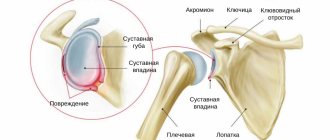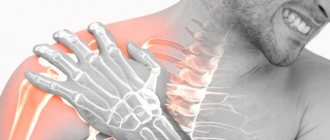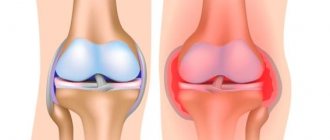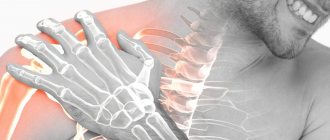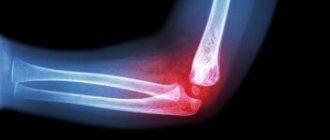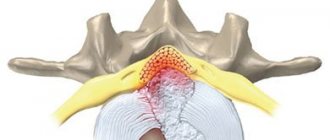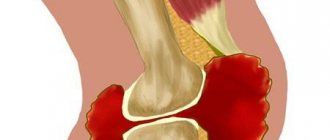Shoulder dislocation is an injury that occurs when the head of the humerus extends beyond the boundaries of the glenoid cavity connecting to it.
Appears, as a rule, under the influence of unfavorable external influences in the form of strong blows and various types of injuries. Next, you are invited to familiarize yourself in more detail with basic information about shoulder dislocations, their types, causes, characteristic symptoms and treatment methods.
Understanding Shoulder Dislocations
The dislocation in question can be of the anterior and posterior type, as well as lower - this is determined by the direction of displacement of the above-mentioned bone.
- Front.
Diagnosed in the vast majority of situations. The head of the bone moves anteriorly. If this type of damage occurs, the bone may go under the beak-shaped part of the shoulder blade and move further to the front, penetrating under the collarbone. In most cases, anterior dislocations are accompanied by a relatively minor disruption of the structure of the cartilaginous ridge. - Rear.
Relatively rare injury. Accompanied by the departure of a cartilage roller in the area of the posterior part of the cavity. It is formed mainly when a person falls on his arms outstretched in front of him. - Lower.
Accompanied by downward movement of the head of the humerus. In the presence of such damage, it becomes impossible to lower the upper limb down - until a specialist sets the damaged joint, the injured person will only be able to keep his arm raised.
How to apply tape to a shoulder
◩ The shoulder joint is rotated inward. We apply tape to the collarbone in the middle. The tension is half as great.
◪ Glued along the front of the shoulder joint, gradually moving it back.
◩ Next, the joint rotates outward.
◪ Glue the beginning of the next tape to the line leading from the shoulder blade to the shoulder.
◩ Also, the degree of tension is not more than 50%.
◪ The main application is on the back of the shoulder, gradually bringing the tape forward.
◩ The third tape is applied on top of the first 2, starting from the surface of the neck. The direction is slightly forward.
Classification of dislocations
The damage studied may be congenital or acquired. The latter are additionally classified into injuries of non-traumatic and traumatic groups.
The non-traumatic category includes chronic as well as voluntary dislocations. As for traumatic disorders, this category includes uncomplicated and complicated dislocations. The second group includes habitual and repeated dislocations, as well as chronic dislocations and fracture-dislocations. Additionally, this includes open dislocations, accompanied by a violation of the integrity of the tendons and neurovascular bundle.
In accordance with average statistical data, about 60% of all cases of damage to the shoulder girdle are caused by dislocations of traumatic origin. This frequency can be easily explained by the anatomical and physiological properties of the joint being studied: the dimensions of the socket and the head of the bone connecting to it do not coincide, the joint has a high density, the capsule is characterized by low strength - these and other associated factors contribute to an increased risk of dislocations.
Preventive measures
The reliability of joint fixation directly depends on the developed muscular frame. Strong and developed muscles are a reliable protection for all joints in the body from subluxation. You can strengthen your muscle corset with physical therapy and special massage.
Sports should be regular. They should be organized in such a way that all muscle groups participate in the training. In this case, it is necessary to take into account your physical capabilities and avoid excessive stress, which can lead to various types of injuries.
Read also: Shoulder dislocation
Reasonable health care and prevention of musculoskeletal diseases will extend a high-quality active life.
If injuries cannot be avoided, it is necessary to carry out a timely course of treatment and follow the doctor’s recommendations during the recovery period. Regarding the video in this article, it provides complete information about shoulder injury.
The concept of habitual dislocation
The occurrence of this pathology is facilitated by fractures of the joint cavity, various types of violations of the integrity of the neurovascular bundle and other factors. Most often, the problem develops due to a dislocation of a traumatic nature if the rules for its treatment are not followed. As a result, damaged tissues are restored with scarring, which causes disruption of normal muscle balance. The joint becomes unstable, which is the main provoking factor in relation to habitual dislocation.
From the patient’s perspective, the situation looks like this: some time ago he suffered a severe shoulder injury. After some time, dislocations began to occur again even in the absence of significant loads. Moreover, the more often repeated dislocations appear, the less load is enough to cause the next injury and the faster it will pass.
Medicine knows cases when patients had over 500 dislocations in their history and they occurred every day, sometimes even several times. Such patients, as a rule, refused medical assistance and adapted to self-reduction of the joint, which is incorrect, because this can cause all sorts of complications.
operations
operations
These types of surgical intervention can be performed using arthroscopy or open access. The choice of technique is determined by the doctor based on objective research data, as well as the technical capabilities of the medical clinic.
Arthroscopic operations
In modern medical clinics, whenever possible, arthroscopy is used, which makes it possible to correct habitual shoulder dislocations using small incisions. The cost of the operation and the overall course of treatment is lower, since the duration of the postoperative and rehabilitation period is noticeably reduced.
Arthroscopy is the method of choice, with which it is possible to effectively treat habitual shoulder dislocation. Video on the monitor allows the doctor to visually monitor the manipulations performed using special micro-instruments.
Open access operations
In case of significant violation of the anatomical integrity, leading to instability of the joint, plastic surgical interventions are performed using an open approach. To do this, wide incisions are made in the skin, subcutaneous tissue and capsule, allowing wide access to the structures being restored.
This type of surgical intervention can be used if it is necessary to perform osteoplastic surgery with implantation.
When surgical intervention is performed using an open approach to restore stability in such a pathological condition as a habitual dislocation of the shoulder, the prices are higher. This is due to the peculiarities of the operation, the need for a longer preoperative and rehabilitation period, and the frequent use of a significant number of drugs of various pharmacological groups.
Causes of dislocations
The appearance of such injuries is facilitated, first of all, by blows to the corresponding area or, which according to statistics occurs even more often, by a fall on arms outstretched in front of oneself. Also among the provoking factors should be considered careless rotational movements of the upper limbs with the application of force.
What is noteworthy is that shoulder dislocations are diagnosed relatively rarely in people involved in powerlifting and bodybuilding, but receiving such injuries causes many problems and seriously threatens the possibility of further training as usual.
That is why athletes whose lifestyle involves serious stress on their shoulders and body as a whole need to be especially careful and attentive to their health.
Complications
Unfortunately, the diagnosis of “dislocation of the shoulder joint” is quite serious. Rehabilitation and treatment without accurate diagnosis can lead to numerous complications. These include:
- joint instability;
- damage to peripheral nerves (tingling sensation, sensitivity disorders of the entire upper limb);
- limited range of motion in the joint;
- relapses even after a banal injury;
- degenerative changes in the shoulder joint.
Characteristic signs of dislocations
Symptoms of shoulder dislocations are described in the table.
Table. Signs of a shoulder dislocation
| Symptoms | Description |
| They arise immediately at the moment of injury and continue subsequently. As a rule, they appear suddenly. There is a feeling that the shoulder is not where it should be. | |
| An injured shoulder will look different than a healthy one. Most often, its external contours are violated. | |
| Any careless movements of the damaged part of the body cause severe pain. The patient tries to hold the injured arm near the body to avoid discomfort. | |
| Other signs | For example, in the event of a violation of the integrity of blood vessels or damage to nerves, stabbing pain, bruising, various types of numbness and other manifestations may occur. |
Shoulder Taping Tips
It is necessary to bandage the shoulder joint in case of dislocations, fractures or other injuries. The most common use of a bandage is to ensure that the bandage holds firmly, does not press, but does not slip, it must perform its functions correctly, the bandage must be applied correctly to the shoulder.
Basic Rules:
- The bandage should be applied firmly, but not put pressure. The part of the body to be bandaged must be accessible. Bandaging is always done from left to right. When drawing a circle around the shoulder, it becomes clear that crossing the tape is required. It is produced in a spiral or figure eight.
- To carry out dressing, a wounded person needs to be provided with reliable support in a static position, without bending back. This is provided by one more person. The shoulder can be supported under the elbow if there is no reliable support.
- When applying a bandage, you must stand facing the victim, hold the bandage in your right hand, and hold its initial edge with your left. The bandage should be pulled evenly over the entire shoulder to avoid wrinkles. For dressing, you should choose a wide bandage.
- A bandage is applied to the shoulder joint in a spica-shaped manner, as it is the most durable and effective. The bandaging begins from the upper third of the joint, the upper turn passes through it, the lower turn - in the armpit on the opposite side of the wounded arm. Then in front along the chest and joint, moving the tape under the armpit on the sore side, overlapping in the shoulder area, return the bandage to the armpit of the healthy side. This is done several times until the shoulder joint is completely covered with tape tissue. The extended edge of the bandage is attached to the upper third of the shoulder along with the initial edge brought out from under the bandage.
The video shows how to apply a bandage to the shoulder joint:
First aid
First, the victim must stop moving the affected part of the body.
Secondly, you need to call an ambulance or quickly take the patient to the emergency room if he can walk independently.
Thirdly, you need to apply an ice pack or any other cold object to the damaged area. After holding for 15 minutes, you need to take a break and then repeat the manipulation.
Fourthly, it is necessary to exclude independent attempts to reduce the damaged joint. If it is not possible to quickly seek help, the shoulder should be secured with a bandage.
The doctor will assess the victim’s condition and send him for an x-ray to determine the type of dislocation and exclude/confirm the presence of a fracture.
Materials used for dressing
Various types of fiber and fabric media can be used in dressings:
Arrests of doctors: rheumatologists deprived patients of the most effective remedy for joint pain!
Bubnovsky Sergey Mikhailovich
leading rheumatologist of the country, deputy. Chairman, 1st Deputy Director of the Federal State Budgetary Institution NIIR named after. V. A. Nasonova
Find out more...
What is happening is what our law enforcement agencies should have done a long time ago - arrest this entire mafia. Just think about these numbers - more than 1 million crippled lives in 12 years! People, most of them pensioners, turned to doctors for help. And instead of treating, they profited from people’s suffering, knowing in advance that the remedies they prescribed would not help. And this practice was widespread not only in commercial ones, but also, worst of all, in public clinics.
- non-sterile or sterile gauze is used to make bandages, napkins and tampons;
- for purulent-inflammatory diseases, adsorbent gauze with special medicinal impregnation is used;
- when applying a tight bandage, a special fabric of a slightly reddish color is used - calico;
- in case of damage to the shoulder joint, accompanied by burns of various etiologies, tilexol is used;
- sometimes when dressing, bleached and unbleached cotton wool (viscose and cellulose) is used;
- elastic material and adhesive plasters.
Tilexol is impregnated with special oil, sterilized and used as an ointment bandage.
As a rule, when applying bandages, several types of material are used, for example, hygroscopic and impregnated gauze or cotton wool in combination with gauze, etc. Different materials complement each other and enhance the therapeutic effect on the joint.
Treatment and rehabilitation
Treatment is carried out in several stages.
- The doctor numbs the damaged area with an injection of an appropriate drug, for example, novocaine.
- The specialist adjusts the shoulder.
This process is accompanied by quite severe pain. That is why a painkiller injection is given first. If the dislocation cannot be adjusted manually, surgery may be required. During the operation, the specialist realigns the joint and ensures its fixation using needles and sutures.
- The shoulder is immobilized, promoting faster recovery and minimizing the likelihood of relapses. The damaged area is immobilized using a Deso bandage, splint or other available means at the discretion of the doctor.
- Rehabilitation measures are carried out, the main task of which is to strengthen the ligaments and muscles, thereby significantly reducing the risk of recurrence of dislocations. A variety of physiotherapeutic procedures, exercises, and massages help well.
In some cases, it is necessary to resort to surgical intervention. Most often, the need for this arises with very severe injuries or the development of a habitual dislocation.
The choice of a specific treatment option remains with the attending physician. Any vigorous activity and stress on the shoulders can be resumed only after complete restoration of the damaged areas. Specific recommendations for further life activities will be provided by the attending physician, taking into account the individual characteristics of the patient’s condition.
As for rehabilitation, the duration and severity of this process varies depending on the age of the patients and the characteristics of their life activities. For example, healthy adults recover in an average of 3-4 weeks. Athletes will have to wait at least 1.5-2 months before beginning a gradual return to sports.
You can begin to gradually develop the joint only after the swelling and pain have completely disappeared. The selection of rehabilitation exercises is carried out by a doctor on an individual basis, focusing on the severity of the dislocation and its characteristics. You are invited to familiarize yourself with the list of exercises that are used in most cases. Before performing any of these, be sure to consult with your healthcare professional.
Diagnostics
Diagnostics
- examines the joint;
- pays attention to its configuration, the presence of an inflammatory reaction (redness of the skin, swelling of soft tissues);
- determines the possibility of performing active and passive movements, as well as their volume.
- if necessary, prescribe an additional objective study, which makes it possible to determine the nature and severity of possible damage to the joint structures.
For objective diagnosis, visualization methods are used, which include radiography (the study is carried out in frontal and lateral projection), computed or magnetic resonance imaging, which is a layer-by-layer scanning of tissues with high separation power, as well as ultrasound.
In modern medical clinics, diagnostic arthroscopy is performed to examine internal structures, which is their visualization using a small tube inserted with a camera and lighting. It can be used as a curative operation (habitual shoulder dislocation). Diagnostic prices depend on its volume and the methods used.
Useful exercises
The exercises are based on rotational-translational movements. The pace of execution is slow. Any sudden movements are excluded. The proposed complex makes it possible to restore the tone of damaged muscles and generally normalize the function of the shoulder joint. The optimal number of repetitions in each exercise is 5.
- Lower your upper limbs down, press them towards your body. Your feet should be spaced shoulder width apart. Alternately raise your shoulders and lower them down.
- Make circular movements with your shoulders. First work in one direction, then in the opposite direction.
- Bend your elbows. Raise your hands to your shoulders. Make rotational movements with your arms.
- Raise your hands up and clasp them together. Holding the “lock” above your head, make rotational circular movements to the left, then to the right. If performing this exercise is difficult, first work on one arm, first bending it at the elbow, then the other. Support your working hand with your free hand.
- Clench your fists. Hold your arms in front of you and alternately bend and straighten them at the elbows.
- Take turns placing your hands behind your back.
- Place your palms together with your fingers pointing upward. Press your palms firmly against each other for a few seconds, then relax your hands.
You have now learned the basics about shoulder dislocation. Remember: the sooner you see a doctor if you are injured, the faster and easier the treatment and recovery process will be. Follow the recommendations of specialists, take care of yourself and be healthy!
Types of materials
The shoulder brace, made only from cotton or wool, is very comfortable to wear. It does not rub the skin, allows air to pass through well, and has a moderate warming effect. But such an orthosis has a significant drawback - when worn, it quickly stretches, loses elasticity, and ceases to reliably fix the diseased joint. Extend service life by washing in cool water and drying on horizontal surfaces.
Medical devices made of neoprene are inexpensive and do not lose their healing properties with prolonged use. Synthetic material reliably retains heat in the shoulder. Thanks to the warming effect in damaged tissues:
- blood circulation accelerates;
- metabolic processes and regeneration are normalized.
But neoprene practically does not allow air and moisture to pass through, which negatively affects the condition of the skin. The problem is solved by lifting thin cotton or linen clothing.
Polyester and elastin combine all the positive qualities of neoprene, cotton and wool. They do not stretch when washed, are moisture- and breathable, and hypoallergenic. But they have one drawback - the high price.
Rating scales
Oxford Shoulder Instability Test (OISS)
The OISS is a 12-item questionnaire with five correct Likert responses for each question and has a range from 0 to 48 (with a score of 48 indicating better shoulder function). The OISS was developed and validated to assess shoulder instability and has also been tested to assess sensation in patients with shoulder instability.
Western Ontario Shoulder Instability Index (WOSI)
The WOSI is a 21-item questionnaire with a 100 mm horizontal visual analogue scale below each patient response question and ranges from 0 to 2100 as a percentage, with 100% representing the best possible shoulder-related quality of life. The WOSI is a carefully developed and evaluated instrument for patients with shoulder instability that has been demonstrated to have excellent sensitivity for posterior instability.
